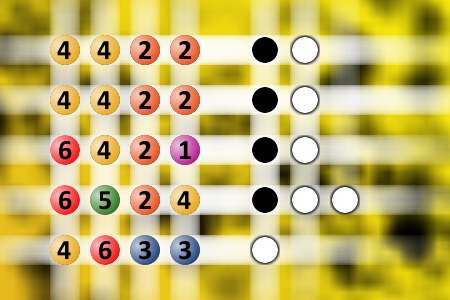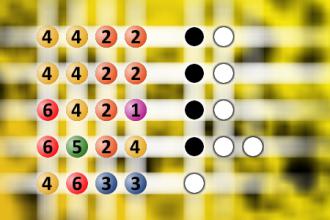Which is a winning combination of digits?
The computer chose a secret code (sequence of 4 digits from 1 to 6). Your goal is to find that code. Black circles indicate the number of hits on the right spot. White circles indicate the number of hits on the wrong spot.Correct answers: 3
#brainteasers #mastermind

There was this Asian lady marr...
There was this Asian lady married to an English gentleman and they lived in London. The poor lady was not very proficient in English, but managed to communicate with her husband. The real problem arose whenever she had to shop for groceries.
One day, she went to the butcher and wanted to buy pork legs. She didn't know how to put forward her request, and in esperation, lifted up her skirt to show her thighs. The butcher got the message and the lady went home with pork legs.
The next day, she needed to get chicken breasts. Again, she didn't know how to say, and so she unbuttoned her blouse to show the butcher her breast.
The lady got what she wanted.
The 3rd day, the poor lady needed to buy sausages. Unable to find a way to communicate this, she brought her husband to the store...
What were you thinking? Hellooo, her husband speaks English!!
One day, she went to the butcher and wanted to buy pork legs. She didn't know how to put forward her request, and in esperation, lifted up her skirt to show her thighs. The butcher got the message and the lady went home with pork legs.
The next day, she needed to get chicken breasts. Again, she didn't know how to say, and so she unbuttoned her blouse to show the butcher her breast.
The lady got what she wanted.
The 3rd day, the poor lady needed to buy sausages. Unable to find a way to communicate this, she brought her husband to the store...
What were you thinking? Hellooo, her husband speaks English!!

